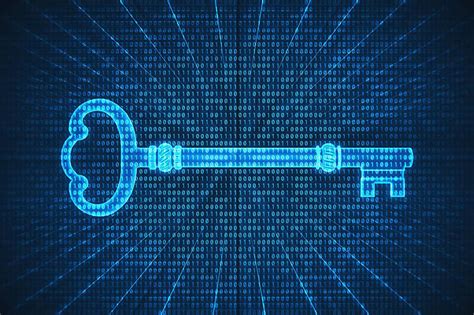For decades, our digital world has been secured by a silent, invisible fortress. This fortress, built upon a foundation of classical cryptographic algorithms like RSA and Elliptic Curve Cryptography (ECC), protects everything from our bank transactions and private messages to national security secrets. It has been an incredibly effective defense, relying on mathematical problems so difficult for conventional computers to solve that they are considered practically impossible. However, a seismic shift in computing is on the horizon, threatening to crumble this fortress to dust. The advent of large-scale quantum computers represents the single greatest threat to modern cryptography. These revolutionary machines operate on principles that allow them to solve the very mathematical problems our current security relies on with alarming efficiency.
The threat isn’t a distant, theoretical problem anymore. It’s a clear and present danger that demands immediate attention. The race is on to develop and deploy a new generation of cryptographic defenses—defenses that are secure not only against today’s supercomputers but also against the quantum computers of tomorrow. This new field is known as Post-Quantum Cryptography (PQC), and the tools, libraries, and protocols that implement it are collectively referred to as quantum-safe crypto utilities. This guide will serve as your comprehensive introduction to this critical domain. We will explore the nature of the quantum threat, delve into the new algorithms designed to counter it, and outline the practical steps necessary for migrating to a quantum-resistant future. The transition is not a simple switch; it is a complex, global undertaking, but one that is absolutely essential for preserving privacy, security, and trust in the digital age.
The Quantum Menace: Why Our Digital Locks Are About to Break
To understand why we need to change, we must first appreciate the elegant but fragile nature of our current security. Modern asymmetric cryptography, the system used for establishing secure connections and verifying digital identities, is based on “trapdoor” functions. These are mathematical operations that are easy to perform in one direction but incredibly difficult to reverse.
For example, a classical computer can easily multiply two large prime numbers to get a massive composite number. However, taking that massive composite number and figuring out its original prime factors is an exponentially harder task. This is the foundation of the RSA algorithm. Similarly, Elliptic Curve Cryptography (ECC) relies on the difficulty of finding the discrete logarithm of a random elliptic curve element. For all practical purposes, these problems are unsolvable by even the most powerful classical supercomputers we can envision.
Enter the quantum computer. Unlike classical computers that store information in bits as either a 0 or a 1, a quantum computer uses qubits. Thanks to the principles of superposition and entanglement, a qubit can exist in a combination of both 0 and 1 simultaneously. A system of entangled qubits can explore a vast number of possibilities at once, giving quantum computers an exponential speed advantage for specific types of problems.
Two quantum algorithms in particular spell doom for our current cryptographic standards:
-
Shor’s Algorithm: Developed by mathematician Peter Shor in 1994, this is the true “killer app” for quantum computers against cryptography. It is specifically designed to find the prime factors of large numbers and calculate discrete logarithms with incredible speed. A sufficiently powerful quantum computer running Shor’s algorithm could break RSA-2048 encryption, a standard used worldwide, in a matter of hours or days, a feat that would take a classical computer billions of years.
-
Grover’s Algorithm: While not as devastating as Shor’s, Grover’s algorithm provides a quadratic speedup for searching unstructured databases. This has implications for symmetric encryption algorithms like AES (Advanced Encryption Standard). While it doesn’t “break” AES in the same way Shor’s breaks RSA, it effectively weakens it. For instance, it makes a 128-bit key provide the equivalent of only 64 bits of security against a quantum attacker. Fortunately, this threat is easily mitigated by simply doubling the key length—for example, moving from AES-128 to AES-256 renders it secure again.
A particularly insidious threat that makes this problem urgent is the “Harvest Now, Decrypt Later” (HNDL) attack. Malicious actors are already capturing and storing vast amounts of encrypted data today. This data—government secrets, intellectual property, financial records, and personal communications—is currently safe. However, the attackers are betting that once a powerful quantum computer is available, they will be able to decrypt this historical data trove. Any information that needs to remain secret for the next 10, 20, or 50 years is already at risk. The countdown has begun, and waiting for the first quantum attack is waiting too long.
Defining Quantum-Safe Crypto Utilities: The New Toolkit
Faced with this existential threat, the global cryptographic community has been hard at work. The solution is Post-Quantum Cryptography (PQC). It’s crucial to understand what PQC is and what it isn’t.
PQC does not use quantum computers for encryption. Instead, it refers to a new class of classical algorithms that are designed to run on the computers we use today but are based on mathematical problems believed to be hard for both classical and quantum computers to solve. These new problems are drawn from different areas of mathematics than prime factorization or discrete logarithms.
Quantum-safe crypto utilities are the practical implementations of these PQC algorithms. They are the software libraries, hardware modules, protocols, and developer tools that will allow us to integrate this next-generation security into our systems. Think of them as the new locks, keys, and security guards for our digital world.
The primary goal of these utilities is to provide a seamless replacement for our existing cryptographic infrastructure. To achieve this, they must be evaluated on three core criteria:
A. Security: First and foremost, the underlying algorithm must be resistant to all known attacks from both classical and quantum computers. This is the highest priority, and it is assessed through years of intense public scrutiny by mathematicians and cryptographers worldwide.
B. Performance: The new algorithms must be efficient enough to operate in real-world environments without causing unacceptable slowdowns. This includes factors like the speed of key generation, encryption, and decryption, as well as the size of the cryptographic keys and signatures. An algorithm that is perfectly secure but too slow or resource-intensive for a web server or a smartphone is not a viable solution.
C. Ease of Integration: The utilities must be designed for easy adoption by developers and system administrators. They should integrate into existing protocols like TLS (which secures the web), VPNs, and code signing systems with minimal disruption.
The most important effort in this space is the NIST Post-Quantum Cryptography Standardization Project. The U.S. National Institute of Standards and Technology (NIST) has been running a multi-year competition to identify and standardize the most promising PQC algorithms. After several rounds of rigorous analysis involving experts from around the globe, NIST announced its first set of standardized algorithms in 2022 and formalized them in 2024, providing a trusted foundation for the global migration to PQC.
The New Guard: A Tour of Leading PQC Algorithms

The algorithms being standardized by NIST are not monolithic; they are based on several distinct mathematical approaches. This diversity is a strategic advantage, as it hedges against the possibility that a future breakthrough in mathematics or quantum computing could weaken a single class of algorithms. Here are the leading families of PQC algorithms:
A. Lattice-Based Cryptography This is currently the most prominent and promising family of PQC algorithms. The core idea is based on the difficulty of solving problems related to lattices—which can be imagined as a grid of points in a high-dimensional space. The hard problem is to find the shortest non-zero vector in a lattice (Shortest Vector Problem) or the lattice point closest to a given random point (Closest Vector Problem).
- Key Standardized Algorithms:
- CRYSTALS-Kyber: Chosen by NIST as the standard for Key Encapsulation Mechanisms (KEMs), used for establishing secure communication channels (like in TLS).
- CRYSTALS-Dilithium: Chosen by NIST as the primary standard for digital signatures, used for verifying the authenticity and integrity of messages and software.
- Pros: They offer a strong balance of high security and excellent performance, with relatively small key and signature sizes compared to other PQC families.
- Cons: The underlying mathematics is complex, and they have larger key sizes than the classical algorithms they replace, which can be a challenge for some resource-constrained devices.
B. Hash-Based Cryptography This approach builds security on a very simple and well-understood foundation: cryptographic hash functions (like SHA-256). The security of a hash-based signature scheme is directly tied to the security of the underlying hash function. If the hash function is secure, the signature scheme is secure.
- Key Standardized Algorithm:
- SPHINCS+: Chosen by NIST as a standard for digital signatures.
- Pros: The security is exceptionally well understood and inspires high confidence. It relies on minimal assumptions compared to other families.
- Cons: The main drawback is performance. SPHINCS+ signatures are significantly larger and slower to generate than those from Dilithium. Earlier hash-based schemes were “stateful,” meaning a signing key could only be used a fixed number of times and required careful state management, but SPHINCS+ is a stateless design that overcomes this at the cost of performance and size.
C. Code-Based Cryptography This is one of the oldest families of PQC algorithms, first proposed in the 1970s. It bases its security on the difficulty of decoding a random linear error-correcting code. Imagine sending a message with some intentional errors (noise) added; the receiver, who knows the secret code, can easily remove the errors, but an eavesdropper who doesn’t know the code finds it impossible.
- Key Standardized Algorithm:
- Classic McEliece: Based on the original McEliece cryptosystem. It is being considered by NIST for standardization.
- Pros: It has a very long history of resisting cryptanalytic attacks, giving it a high degree of trust.
- Cons: Its primary disadvantage is the massive size of its public keys, which can be on the order of a megabyte. This makes it impractical for many modern applications where bandwidth and storage are limited.
D. Symmetric Key Cryptography It is important to remember that not all cryptography is broken by quantum computers. Symmetric algorithms, where the same key is used to both encrypt and decrypt data, are much more resilient. The premier standard here is the Advanced Encryption Standard (AES).
- Quantum Impact: As mentioned earlier, Grover’s algorithm weakens symmetric keys but does not break them. The attack reduces the effective security by half.
- The Solution: The fix is straightforward and already widely practiced: use a larger key. A quantum computer using Grover’s algorithm to attack an AES-256 key would still face a 128-bit security level, which remains completely unbreakable by any known computer, classical or quantum. Therefore, AES-256 is considered quantum-safe.
The Great Migration: A Practical Guide to PQC Implementation
Knowing about the new algorithms is one thing; deploying them across the vast, interconnected digital ecosystem is another challenge entirely. The migration to PQC will be a long and complex process, likely taking the better part of a decade. The central principle guiding this transition is crypto-agility. This is the design philosophy of building systems in a way that allows cryptographic algorithms to be replaced easily and quickly without requiring a complete system overhaul. Organizations that lack crypto-agility will face immense difficulty and expense when the PQC transition becomes mandatory.
The migration can be broken down into a series of strategic steps:
A. Inventory and Discovery: The first step for any organization is to create a comprehensive inventory of every application, system, and device that uses cryptography. This is often the most challenging part, as encryption can be deeply embedded in legacy systems, third-party libraries, and hardware. You cannot protect what you do not know you have.
B. Risk Assessment and Prioritization: Once the inventory is complete, each system must be assessed. The key questions are: How critical is this system? What kind of data does it protect? And what is the required security lifespan of that data? Systems protecting long-lived secrets (like government classified information or human genome data) should be prioritized for migration first due to the HNDL threat.
C. Testing and Validation: Before deploying PQC in a live environment, organizations must test it thoroughly. This involves setting up pilot programs to evaluate the performance impact of the new algorithms. Will the larger key sizes of Kyber affect the latency of your web servers? Will the slower signature generation of SPHINCS+ be acceptable for your software update process? These questions must be answered to avoid unexpected bottlenecks.
D. The Hybrid Approach: For the foreseeable future, the most common migration strategy will be a hybrid one. In this model, systems use two algorithms in parallel: one classical (like RSA or ECC) and one post-quantum (like Kyber). For instance, when establishing a secure TLS connection, the system would generate and transmit two separate keys, one for each algorithm, and combine them. The resulting connection is secure as long as at least one of the algorithms remains unbroken. This approach provides robust security against both classical attackers today and quantum attackers in the future, serving as an excellent transitional measure.
E. Full Deployment and Policy Enforcement: The final phase involves phasing out the legacy classical algorithms entirely and moving to a full PQC implementation. This step should be taken once the PQC standards are finalized, libraries are mature, and the organization has full confidence in its tested deployment plan. This includes updating all security policies and ensuring compliance across the enterprise.
Quantum-Safe Utilities in the Real World

The transition to PQC is not just theoretical; it’s already happening. Major technology players and open-source communities are actively developing and deploying quantum-safe crypto utilities.
One of the most significant initiatives is the Open Quantum Safe (OQS) project. OQS is an open-source project that aims to support the development and prototyping of post-quantum cryptography. The project maintains a library, liboqs, which implements a wide range of PQC algorithms, and has created integrations for popular protocols and applications, including forks of OpenSSL and OpenSSH. This allows developers and researchers to easily experiment with and test quantum-safe protocols today.
Major technology companies are also pioneering PQC deployment:
- Google has already deployed a hybrid PQC key-exchange mechanism (combining a classical algorithm with Kyber-768) in its internal systems and in Chrome to secure TLS connections.
- Cloudflare and Amazon Web Services (AWS) have also rolled out support for PQC-based key exchange in their TLS offerings, allowing customers to begin future-proofing their web traffic.
- Apple has introduced a PQC protocol named PQ3 for iMessage, providing end-to-end encryption that is resistant to quantum attacks.
These early deployments are critical for gathering real-world performance data and uncovering the practical challenges of a global PQC migration.
Securing Our Quantum Future
The emergence of quantum computing marks a fundamental turning point for digital security. The tools that have protected us for decades are on the verge of obsolescence. But this is not a moment for panic; it is a call to action. Thanks to the proactive efforts of the global cryptographic community, we have a clear path forward. A new generation of post-quantum cryptographic algorithms, delivered through robust and accessible quantum-safe crypto utilities, is ready to be deployed.
The transition will be a marathon, not a sprint. It requires careful planning, rigorous testing, and a commitment to the principle of crypto-agility. Developers, CTOs, CISOs, and IT leaders must all understand their role in this migration. The time to start is now. By inventorying our cryptographic systems, prioritizing our most sensitive data, and beginning the process of testing and integration, we can ensure that our digital fortress stands strong against the challenges of tomorrow. The work we do today will build the foundation of trust and security for generations to come in the quantum era.














